Clade Monocots Scientific name Urginea maritima Rank Species | Clade Angiosperms Higher classification Drimia | |
Similar Drimia, Scilla, Strophanthus, Ornithogalum, Scilloideae | ||
Drimia maritima
Drimia maritima (syn. Urginea maritima) is a species of flowering plant in the family Asparagaceae, subfamily Scilloideae (formerly the family Hyacinthaceae). This species is known by several common names, including squill, sea squill, sea onion, and maritime squill. It may also be called red squill, particularly a form which produces red-tinged flowers instead of white. It is native to southern Europe, western Asia, and northern Africa.
Contents
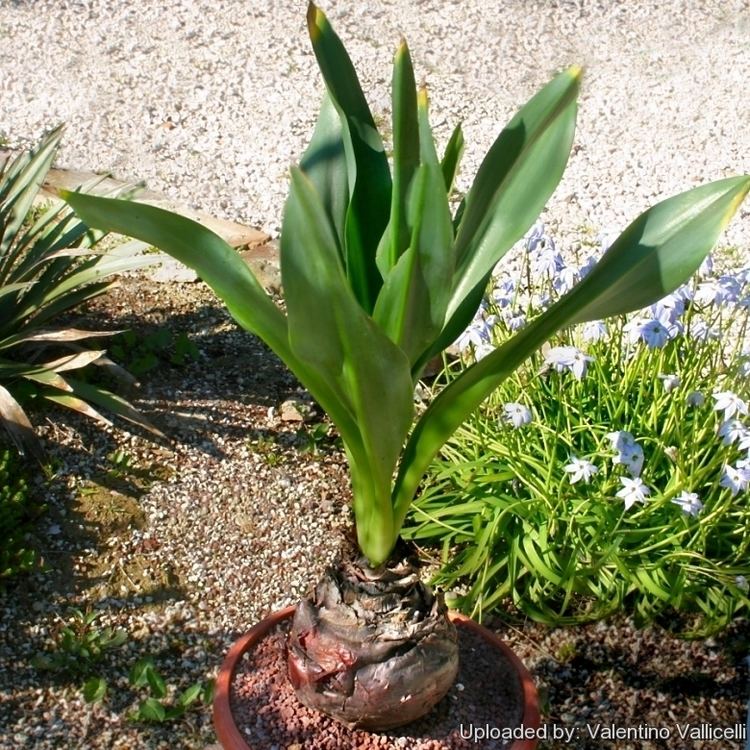
Description
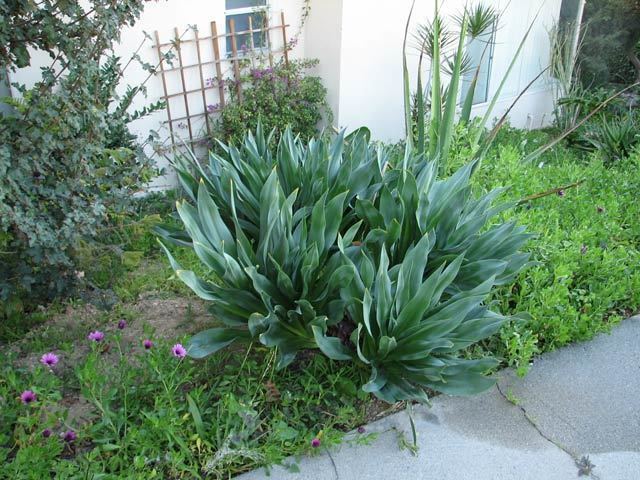
This plant grows from a large bulb which can be up to 20 cm (7.9 in) wide and weigh 1 kg (2.2 lb). Several bulbs may grow in a clump and are usually just beneath the surface of the soil. In the spring, each bulb produces a rosette of about ten leaves each up to a meter long. They are dark green in color and leathery in texture. They die away by fall, when the bulb produces a tall, narrow raceme of flowers. This inflorescence can reach 1.5–2 m (4 ft 11 in–6 ft 7 in) in height. The flower is about 1.5 cm (0.59 in) wide and has six tepals each with a dark stripe down the middle. The tepals are white, with the exception of those on the red-flowered form. The fruit is a capsule up to 1.2 cm (0.47 in) long.
Ecology
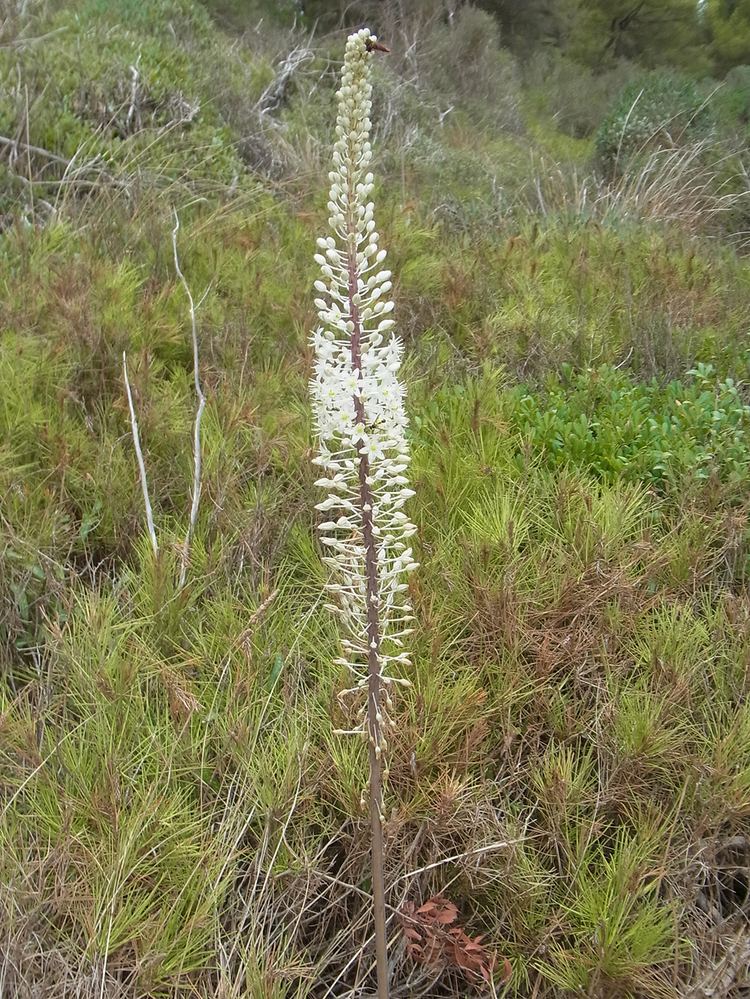
This plant often grows in rocky coastal habitat, especially in the Mediterranean Basin, where it is common. It occurs in many other types of habitat, except for the driest deserts. It can grow in open and also in very shady areas. Its habit of producing leaves in the spring and flowers in the fall is an adaptation to the Mediterranean climate of its native range, where the summers are hot and dry.
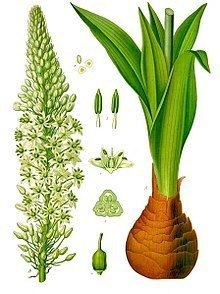
This species has two different pollination syndromes, entomophily and anemophily; it is pollinated by insects and wind. Insect pollinators include the western honey bee (Apis mellifera), the Oriental hornet (Vespa orientalis), and the paper wasp species Polistes gallicus.
Uses
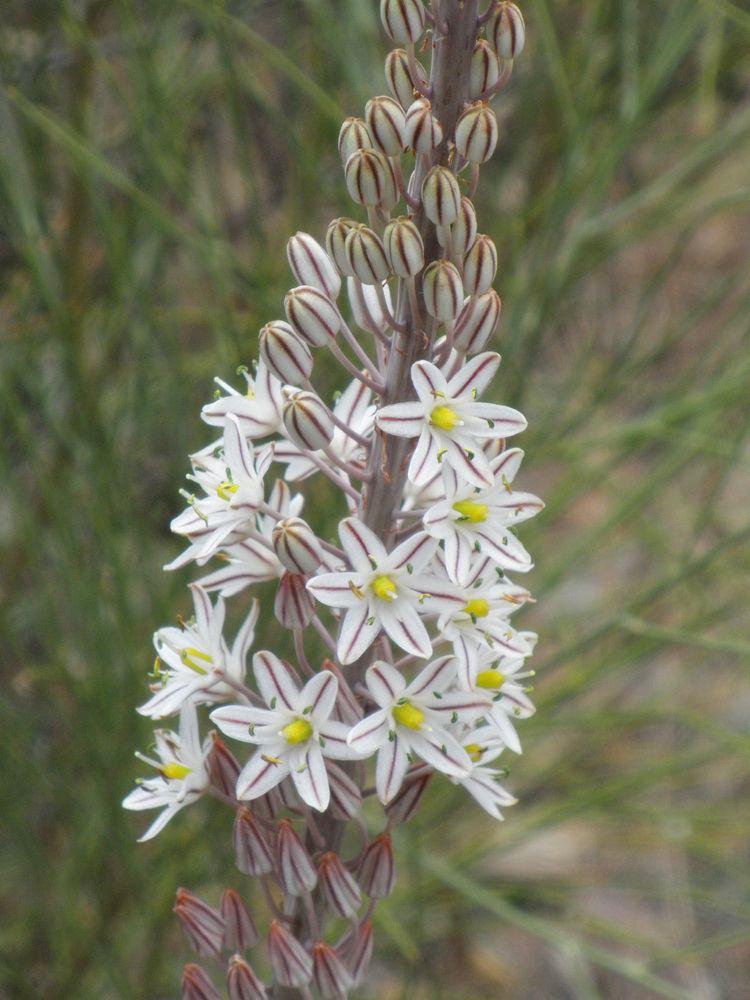
The plant has been used as a poison and as a medicinal remedy. The main active compounds are cardiac glycosides, including unique bufadienolides such as glucoscillarene A, proscillaridine A, scillarene A, scilliglaucoside and scilliphaeoside. The plant can have a cardiac glycoside content of up to 3%. Scilliroside, the most important of the toxic compounds, is present in all parts of the plant.
Medicine
This species has been used as a medicinal plant since ancient times. It is noted in the Ebers Papyrus of the 16th century BC, one of the oldest medical texts of ancient Egypt. Pythagoras wrote about it in the 6th century BC. Hippocrates used it to treat jaundice, convulsions, and asthma. Theophrastus was also familiar with it. Its primary medicinal use was as a treatment for edema, then called dropsy, because of the diuretic properties of the cardiac glycosides. A solution of sea squill and vinegar was a common remedy for centuries. The plant is also used as a laxative and an expectorant.
Poison
The plant has also been used as a poison. It is very bitter, so most animals avoid it. Rats, however, eat it readily, and then succumb to the toxic scilliroside. This has made the plant a popular rodenticide for nearly as long as it has been in use as a medicine. The bulbs are dried and cut into chips, which can then be powdered and mixed with rat bait. The plant was introduced as an experimental agricultural crop in the 20th century primarily to develop high-toxicity varieties for use as rat poison. Interest continued to develop as rats became resistant to coumarin-based poisons.
It has also been tested as an insecticide against pests such as the red flour beetle (Tribolium castaneum).
Spiritual use
Pythagoras and Dioscorides hung the bulbs with sprouted leaves outside the door in spring as protection against evil spirits.
Ornamental use
The tall inflorescences are used as cut flowers in floristry.
